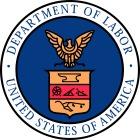EEOC EEO-1 Form Pay Data Requirement Raises Risks for Management
In a proposed regulation announced on January 29, 2015, the U.S. Equal Employment Opportunity Commission set forth changes that would require federal contractors and all other private-sector employers throughout the nation of more than 100 employees to report wage and salary data on their annual EEO-1 Forms. This new rule would mandate that such employers disclose compensation ranges and hours worked on their EEO-1 Forms, which already must contain data on employees’ gender, ethnicity, and race.
The Commission’s plans to require management to submit this data is part of the Obama Administration’s aggressive efforts to enforce the federal Equal Pay Act and other fair employment statutes and to promote pay equity in the workplace. Complying with the new regulation would require employers to spend substantial additional time and resources in gathering compensation information, which often involves many variables, and then organizing it into the format that the EEOC will mandate. Reporting this data to the EEOC would give the U.S. Government data without context and may lead to burdensome Commission investigations and enforcement actions based on misunderstandings of incomplete compensation information. Further, even though EEO-1 data enjoys some protections, the confidential status of employers’compensation information will now be vulnerable either to Freedom of Information Act requests or to kind of hacking attacks to which the federal government, with its antiquated IT systems in agencies such as the EEOC, has already suffered.
In sum, employers in New Jersey, New York, and around the country would become subject to higher EEOC scrutiny of their payroll practices, would face more Commission inquiries and litigations, would have to expend additional resources to complete EEO-1 Forms, and would need to live with a higher risk that their competitors will be able to obtain the confidential compensation data that the new rule would require management to submit each year to the EEOC.
Key Pro-Employee Changes in New York State and New York City Employment Laws and Regulations
New York State and New York City made significant changes in their labor and employment laws and regulations last year and this month. The NYS Legislature enacted, and Governor Cuomo signed, key revisions to laws that affect management throughout New York State. Mayor de Blasio and the City Council expanded local laws that further burden employers in the City. These important developments include:
A. New York State Women’s Equality Agenda
The Women’s Equality Agenda that went into effect on January 19, 2016 significantly amended New York State’s sex discrimination, sexual harassment, and equal pay laws to afford women greater protection in the workplace. These new statutes promoting gender equality in New York State include provisions that:
1. Amend New York State’s Equal Pay Act to require that an employer which pays lower wages to women than to men, for a job of equal skill, effort, and responsibility, demonstrate that such disparity is due to a bona fide factor other than sex, such as education, training, or experience, and that the difference in pay is job related and consistent with business necessity.
2. Make it unlawful for employers, in general, to prohibit employees from discussing or disclosing their wages — a new provision which affects both women and men.
3. Significantly increase the penalties for New York State Equal Pay Act violations by allowing employees to recover liquidated damages of three times (300%) the unlawfully unpaid wages, in addition to making the employee whole by requiring payment of the unpaid wages.
4. Allow a court to award attorneys’ fees to a prevailing plaintiff in sexual harassment and other sex discrimination actions.
5. Add familial status as a protected class under the New York State Human Rights Law. This new provision applies equally to men and women who are parents or guardians.
6. Expand the New York State Human Rights Law’s coverage of sexual harassment claims to all employers, including employers of from one to three employees who were not previously covered.
7. Require employers to provide reasonable accommodation for pregnancy-related medical conditions.
B. New NYS and NYC Protections for Transgender Individuals
1. Earlier this month, the New York State Division of Human Rights adopted regulations that make discrimination on the basis of a person being transgender unlawful under the New York State Human Rights Law. These regulations also prohibit harassment of transgender persons and require New York employers to reasonably accommodate employees who have been diagnosed with a “gender dysphoria” medical condition.
2. On December 21, 2015, the New York City Commission on Human Rights issued new enforcement guidelines on discrimination against transgender individuals, which the New York City Human Rights Law prohibits. The guidelines provide for penalties of up to $250,000 for violations that are found to be willful, wanton, or malicious.
C. New NYC Protections for Caregivers
1. The New York City Council has amended the New York City Human Rights Law to include caregiver as a protected class. The new local legislation, which Mayor de Blasio signed on January 5, 2016, defines caregivers as persons who provide direct and ongoing care for a minor child or a care recipient, such as a relative or individual with a disability who resides in the caregiver’s household. This amendment will go into effect on May 4, 2016.
© Copyright 2016 Sills Cummis & Gross P.C.


 Despite the
Despite the  Like it or not, winter has finally arrived. During times of snowy and icy road conditions, employers will undoubtedly be faced with tardiness, absenteeism, and the possibility of implementing office and/or plant closures. One question that often arises during inclement weather is how to handle pay issues under the Fair Labor Standards Act (FLSA). If you find yourself in that boat snowmobile, read on! While it’s been a while since anything new has been issued in this area, the U.S. Department of Labor has previously issued guidance to help employers administer the FLSA when bad weather affects employee attendance. The answers to many of your questions probably depends on two factors – first, whether the employee is exempt or non-exempt, and second, whether the employer’s business remains open or closes during the inclement weather.
Like it or not, winter has finally arrived. During times of snowy and icy road conditions, employers will undoubtedly be faced with tardiness, absenteeism, and the possibility of implementing office and/or plant closures. One question that often arises during inclement weather is how to handle pay issues under the Fair Labor Standards Act (FLSA). If you find yourself in that boat snowmobile, read on! While it’s been a while since anything new has been issued in this area, the U.S. Department of Labor has previously issued guidance to help employers administer the FLSA when bad weather affects employee attendance. The answers to many of your questions probably depends on two factors – first, whether the employee is exempt or non-exempt, and second, whether the employer’s business remains open or closes during the inclement weather. A particularly noteworthy case was recently decided by the Appellate Division on November 20, 2015. This case, Colleen Fitzgerald v. Walmart, is so interesting because the Court found that the worker’s injured condition did not qualify as a work related injury simply because she felt a “pop” in her low back while walking at work.
A particularly noteworthy case was recently decided by the Appellate Division on November 20, 2015. This case, Colleen Fitzgerald v. Walmart, is so interesting because the Court found that the worker’s injured condition did not qualify as a work related injury simply because she felt a “pop” in her low back while walking at work. On January 20, 2016, the U.S. Department of Labor’s Wage and Hour Division (DOL) articulated a new standard that it will use to
On January 20, 2016, the U.S. Department of Labor’s Wage and Hour Division (DOL) articulated a new standard that it will use to  Each year, USCIS issues 65,000 H-1B visas and 20,000 “master’s cap” visas. April 1, 2016 is he first date on which an H-1B petition may be filed for FY 2017, in anticipation of an October 1, 2016 start date. Last year, USCIS accepted 233,000 petitions in the first week. A lottery was conducted and over 60% of all petitions were rejected.
Each year, USCIS issues 65,000 H-1B visas and 20,000 “master’s cap” visas. April 1, 2016 is he first date on which an H-1B petition may be filed for FY 2017, in anticipation of an October 1, 2016 start date. Last year, USCIS accepted 233,000 petitions in the first week. A lottery was conducted and over 60% of all petitions were rejected.
